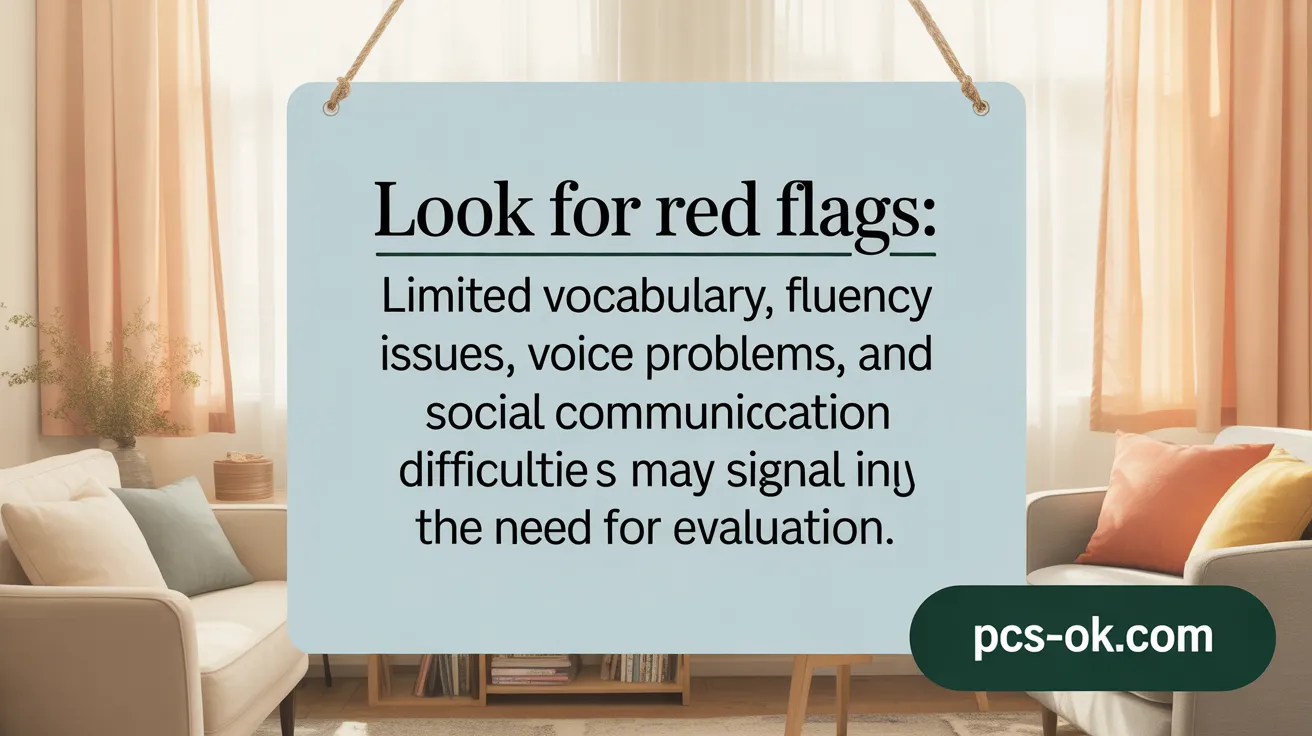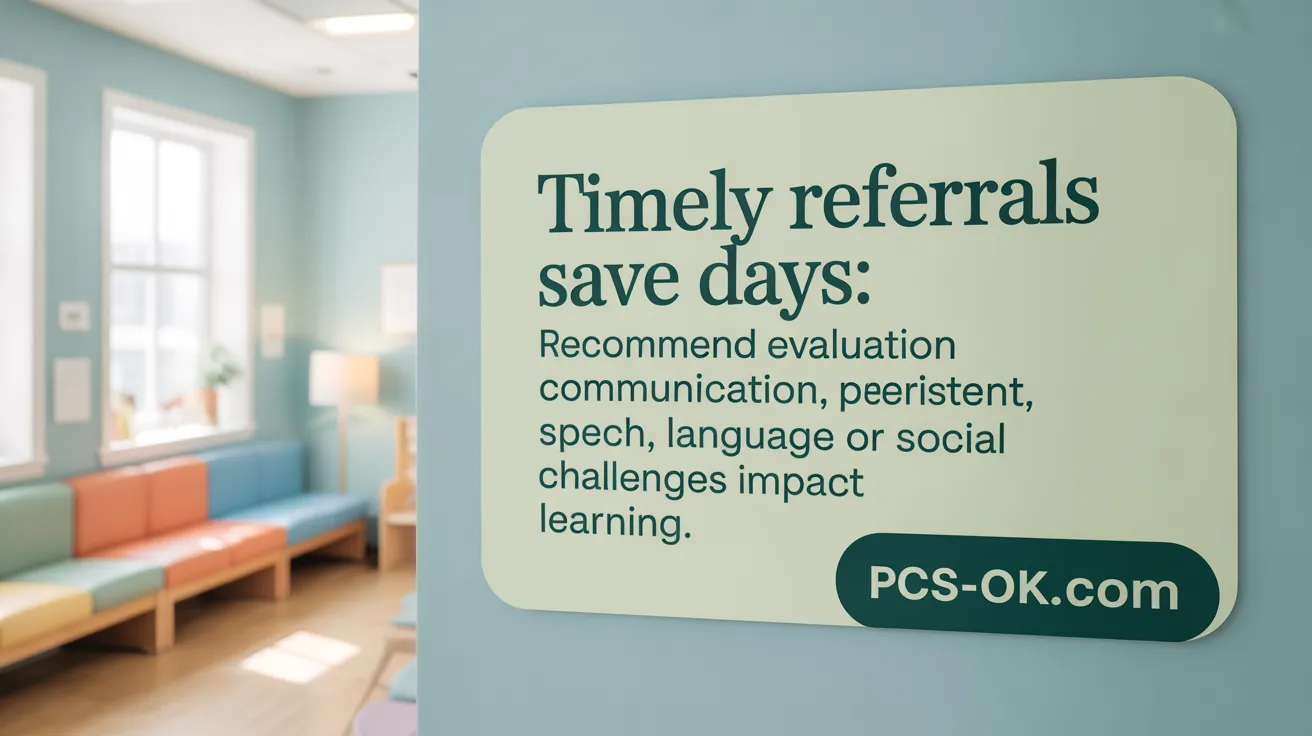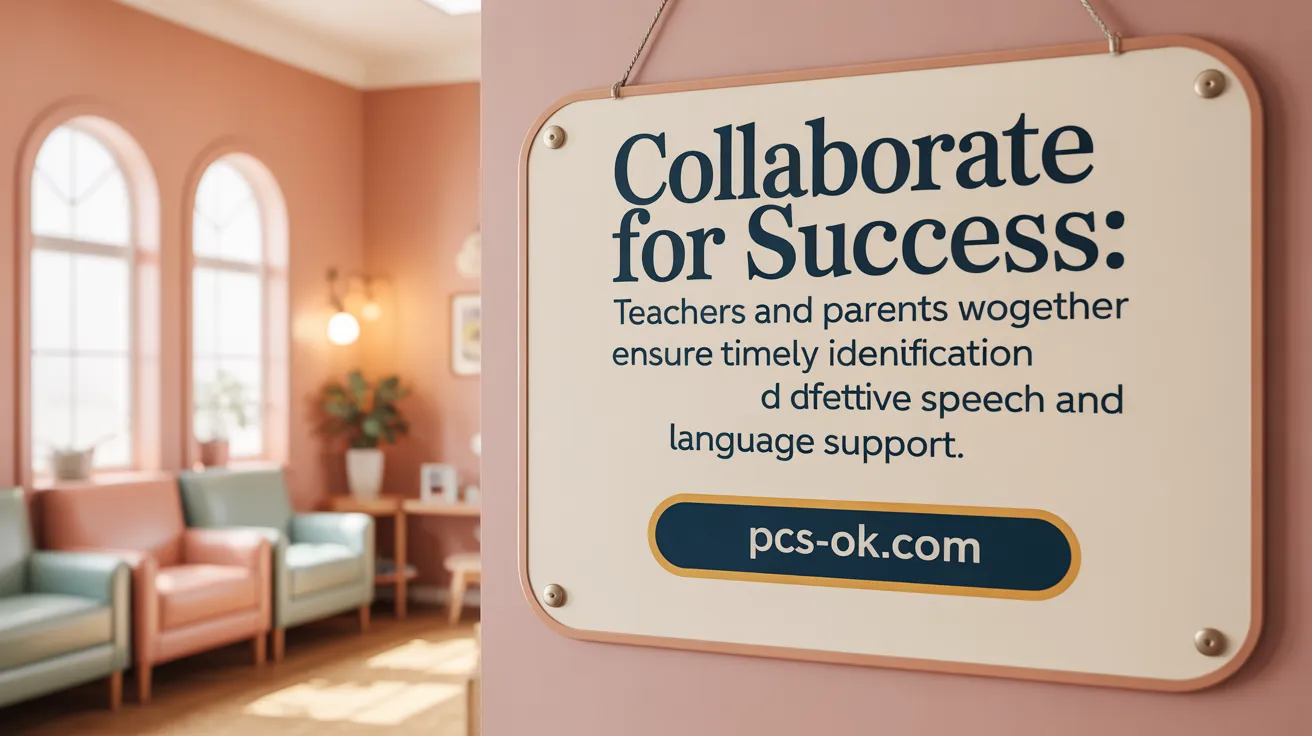When Teachers Recommend a Speech-Language Evaluation
Understanding the Role of Teachers in Speech-Language Evaluations
Teachers often serve as the first observers of speech and language challenges in students. Recognizing when to recommend a speech-language evaluation is crucial to ensuring students receive the support they need to succeed academically and socially. This article explores the indicators teachers should watch for, the evaluation referral process, and the collaborative role of educators, speech-language pathologists (SLPs), and parents in addressing communication disorders within educational settings.
Recognizing Signs That Warrant a Speech-Language Evaluation

What are the signs that indicate a student might need a speech-language evaluation?
Identifying when a child needs a speech-language assessment is crucial for early intervention. Students who show delays in meeting developmental milestones are often the first to warrant attention. For example, if a child has not said their first words by 14 months or does not combine words into simple sentences by age 2, these can be indicators of concern.
Observable communication difficulties in the classroom also provide vital clues. Students who consistently mispronounce sounds more than 20% of the time, making them hard to understand, especially in comparison to age-appropriate speech development charts, may require evaluation. Moreover, limited vocabulary, trouble forming sentences, or slow language growth are signs that something may need professional assessment.
Other common speech disorders include articulation problems, where children struggle with pronouncing sounds correctly, and fluency issues like stuttering, characterized by involuntary repetitions, body tension, or blinking. Voice problems, such as hoarseness or pitch issues, can also affect effective communication.
Social communication challenges can significantly impact a child’s success and interactions. Difficulties in following instructions, answering questions, or asking questions themselves might reveal a language processing issue. Challenges in understanding or engaging with social cues, joining conversations, or maintaining age-appropriate interactions are also red flags.
It’s important to recognize that cultural and linguistic differences can sometimes mimic speech or language delays. Teachers and parents should consider whether communication differences stem from bilingual backgrounds or dialectal variations before pursuing evaluations.
Early identification through observation and awareness ensures children receive the support they need to develop effective communication skills. Schools rely on careful monitoring, and teachers play a vital role in noticing these signs and initiating referrals for speech-language evaluation.
When and Why Teachers Should Recommend a Speech-Language Evaluation

What observations and data do teachers collect to identify speech or language concerns?
Teachers are often the first to notice signs that a student might be struggling with speech or language skills. They observe how clearly a child pronounces words, how well they follow directions, and if they seem to have trouble answering questions or understanding stories. Teachers document specific examples, such as mispronounced sounds, frequent repetitions, or difficulty communicating thoughts.
In addition to speech clarity, teachers watch for language comprehension issues, like understanding instructions or questions, and expressive language problems, such as asking questions or describing ideas. They also note behaviors related to voice and fluency, including any signs of stuttering or voice quality problems.
This observational data is crucial for informing further evaluation and ensuring that concerns are backed by solid examples. Teachers should also consider cultural or linguistic backgrounds to differentiate between language differences and disorders.
When should teachers recommend a speech-language evaluation for a student?
Teachers should suggest an evaluation when they notice persistent and significant difficulties that impact a student’s ability to participate and learn. For articulation issues, signs include unclear speech and difficulty pronouncing sounds more than 20% of the time, especially if they interfere with intelligibility.
Language comprehension and expression concerns include trouble following instructions, answering questions, or communicating ideas clearly. If these issues are observed consistently, especially despite classroom interventions, a referral is appropriate.
For voice, persistent problems like a hoarse voice or abnormal pitch should be evaluated. Regarding fluency, children who stutter frequently and across settings, or show signs of body tension or blinking during speech, should be assessed.
Teachers should ensure that their concerns are supported by specific examples and consider cultural and linguistic factors to avoid misdiagnosis. Referral should be part of a thoughtful process involving data collection, collaboration with SLPs, and parental input.
The influence of cultural sensitivity in referrals
Cultural and linguistic diversity can influence how speech and language issues are perceived. Teachers should be cautious and ensure that observed difficulties are not simply differences in dialect or language background. When in doubt, collaboration with SLPs familiar with bilingual and multicultural populations can prevent misidentification and ensure accurate assessment.
How do speech and language issues impact students’ academic and social skills?
Problems with speech and language can hinder a child’s ability to succeed academically. They may struggle with reading, writing, vocabulary, and following classroom instructions. Socially, these children might find it hard to maintain conversations, make friends, or interpret social cues, impacting their overall well-being.
Early identification and intervention can help mitigate these effects, supporting better educational outcomes and social development.
Legal and educational frameworks guiding referrals
The IDEA (Individuals with Disabilities Education Act) sets guidelines for evaluating and supporting students with speech and language needs. Referrals follow a formal process involving data collection, parental consent, and comprehensive assessments. Evaluations typically include standardized tests, observations, and review of educational performance.
Teachers play a vital role in this process by providing detailed observations and collaborating with specialists. Ensuring culturally appropriate assessments and respecting legal rights helps facilitate fair and effective identification and intervention.
| Aspect | Description | Additional Notes |
|---|---|---|
| Observation | Collect examples of mispronunciations, comprehension issues | Supports referral decision-making |
| Referral Criteria | Significant articulation, language, voice, fluency issues | Based on persistent classroom observations |
| Cultural Sensitivity | Different dialects or languages vs. disorders | Collaborate with bilingual SLPs |
| Impact | Academic delays, social communication problems | Early detection improves outcomes |
| Legal Framework | IDEA, parent consent, comprehensive assessment | Ensures rights and proper support |
Understanding when and why teachers should recommend a speech-language evaluation helps support students in need of communication assistance, ultimately fostering their success in school and social integration.
Navigating the Speech-Language Evaluation Referral Process in Schools
What is the process for referring a student for a speech-language evaluation in an educational setting?
The process starts when teachers, parents, or other involved team members notice speech or language difficulties that may require professional assessment. They initiate a referral, often through a form or checklist designed to gather relevant observations and concerns. This documentation includes specific examples such as difficulty making sounds, understanding spoken language, or expressing ideas clearly.
Once the referral is received by the school, the district has a set period—usually twenty calendar days—to convene a meeting. During this time, educators and specialists review the concerns and decide whether an evaluation is warranted. Parental permission is essential for proceeding; thus, the school must obtain written consent before conducting any assessment.
If the team agrees to move forward, the student undergoes a comprehensive evaluation involving standardized tests—like articulation and language assessments—as well as non-standardized observations and work sample analyses. These evaluations aim to determine if the student qualifies for speech and language services, which are typically provided within ninety days of receiving parental consent.
Throughout this process, clear communication, proper documentation, and early cooperation are vital. Teachers play a crucial role in providing detailed observations, helping to ensure an efficient referral procedure. Engaging parents early and explaining the purpose of evaluations can also foster a supportive environment conducive to timely intervention.
By following these steps and maintaining open lines of communication among teachers, families, and specialists, schools can effectively address students’ speech and language needs, ultimately supporting their academic and social development.
Tools and Techniques Used to Identify the Need for Speech Therapy
In schools, identifying students who may benefit from speech therapy involves a variety of tools and techniques to ensure a thorough and accurate assessment. Commonly, standardized screening and assessment instruments are used, which provide reliable measures of a child’s communication abilities. These tools are often norm-referenced or criterion-referenced, helping professionals determine whether a child’s speech and language skills fall within typical ranges or require intervention.
Apart from formal tests, questionnaires and checklists are invaluable for gathering insights from those who observe the child regularly. Instruments like the Children’s Communication Checklist (CCC-2) offer detailed information about various aspects of communication, including social language use, speech sounds, and expressive language. Parents, teachers, and even students themselves can complete these reports to paint a comprehensive picture.
Observation-based methods are also crucial. Naturalistic approaches, such as language sampling, ethnographic interviews, and everyday classroom observations, allow clinicians and educators to see how children communicate in real-life situations. These methods help spot issues like inconsistent speech, pragmatic challenges, or difficulties understanding or following instructions.
Further, dynamic assessments and curriculum-based evaluations are employed to evaluate how children respond to intervention strategies and how their language skills align with classroom demands. These assessments help determine whether targeted therapy could support the child’s educational success.
Assessments must also respect cultural and ecological contexts to accurately reflect a child’s communication abilities. This means selecting tests and observation strategies that are valid and relevant to the child’s background and everyday environment.
By combining standardized tests, informal observations, and report measures, speech-language pathologists, teachers, and parents can effectively identify children who need further evaluation and potentially speech therapy, paving the way for timely intervention.
Supporting Students Through Evaluation and Intervention: The Collaborative Role of Teachers and Parents

Why and under what circumstances is a speech-language evaluation appropriate for a student?
A speech-language evaluation becomes necessary when a student shows persistent communication difficulties that interfere with learning, social participation, or behavior. Signs include articulation problems, language comprehension issues, voice concerns, or fluency disorders like stuttering. Such challenges are not typical developmental delays and may warrant diagnosis and intervention.
Evaluation should be comprehensive, combining standardized tests, language samples, classroom observations, and interviews with parents and teachers. It considers cultural, linguistic, and cognitive factors and complies with federal guidelines like IDEA, which delineates the criteria for qualifying for special education services. Usually, the goal is to determine if a communication disorder exists and whether specialized support can help the student succeed academically and socially.
How can parents and teachers recognize speech and language problems that require formal assessment?
Teachers and parents are often the first to notice difficulties that merit professional attention. Common indicators include delayed speech development, difficulty understanding instructions, mispronunciations impacting clarity, or limited vocabulary.
Observing frequent misunderstandings or social withdrawal related to communication challenges is crucial. For example, a student who avoids speaking, struggles to follow directions, or cannot answer questions appropriately may need a formal assessment. Additionally, if the child’s speech is unintelligible more than 20% of the time, or if progress stalls despite interventions, it suggests an underlying issue.
Early identification through vigilant observation allows timely referrals. Recognizing these signs ensures children receive appropriate evaluations and supports, maximizing their potential for successful communication.
Ensuring Timely Support Through Teacher Recommendations
Teachers play a pivotal role in identifying speech and language difficulties that affect students’ academic success and social integration. By understanding the signs that warrant evaluation, following structured referral procedures, and collaborating closely with speech-language pathologists and families, educators help facilitate timely access to critical speech therapy services. Equipped with the right tools and knowledge, teachers are vital advocates who contribute to creating supportive learning environments and improving communication outcomes for all students.
References
- When to Refer a Student for Speech Therapy
- When to Refer to Speech Therapy: A Teacher Guide
- Your Child’s Speech/Language Evaluation at School
- Assessment and Evaluation of Speech-Language …
- Services – Speech Therapy
- Frequently Asked Questions – Speech and Language …
- Make the Speech Referral Process Work for You
- 7 Signs Your Child May Benefit from Speech Therapy
- How to Tell if Your Student Could Benefit From Speech …
- Top 10 Signs Your Child Might Need Speech Therapy
